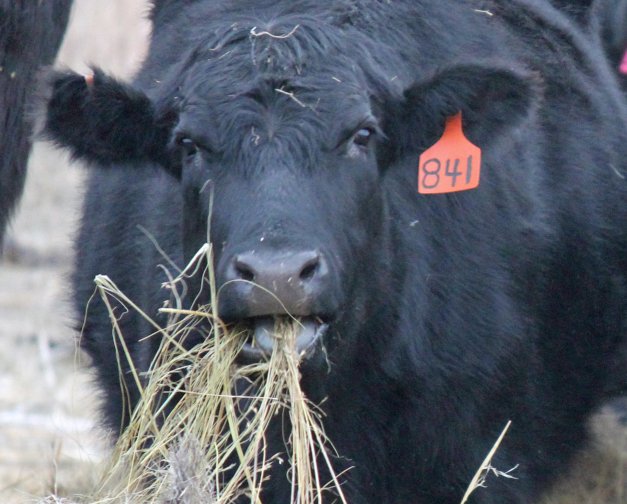
By Steve Tonn, UNL Extension Educator Washington County
Winter feeding time is a ways off but now might be the time to think about how you can reduce hay feeding losses and input costs. Management of input costs is a key business concern and can mean the difference between operational profit or loss. Winter feed represents the largest single cost on a cow-calf operation. Therefore when looking to reduce the cost of production, it is very important to take a long and hard look at winter feed costs, especially when hay is selling in the $150 - $250/ton range. When it comes to hay waste, using the right type of bale feeder can make significant cost savings difference.
An Oklahoma State University study examined four bale feeder designs: a conventional open bottom steel ring, a sheeted bottom steel ring, a polyethylene pipe ring and a modified cone feeder with a sheeted bottom. The research conducted by Dr. Dave Lalman, Oklahoma State University Cooperative Extension beef cattle specialist and other scientists with OSU’s Division of Agricultural Science and Natural Resources indicates that using a cone-style feeder or modified cone feeder with a sheeted bottom should reduce hay waste to approximately five to six percent of the original bale weight. Researchers found that open bottom hay feeders can waste as much as 21 percent of the original bale weight.
The scientists discovered that differences in hay feeder design did not restrict dry matter intake by the cattle, but can significantly affect the amount of feed wasted and subsequently the amount of hay fed. A study at Michigan State University compared feed wastage among different types of round bale feeders. Ring and ring/cone type feeders were the most efficient, resulting in an average of only 4.5 percent waste, while trailer type feeders had 11.4 percent waste. Cradle type feeders were the least efficient with 14.6 percent of the hay wasted. These results support the concept that feeder choice is important.
When considering buying a bale feeder, university researchers have the following suggestions regarding hay feeder design that may help reduce feed losses:
1. Provide enough distance between the outside of the feeder and the feed. Feeders, which allow cows to be able to comfortably keep their heads within the feeder perimeter, reduce feed costs.
2. Avoid bars or dividers between feeding stations. Design features, which allow more access to the hay by reducing a cow’s inclination to push or butt another cow to get access to the hay, will reduce hay losses.
3. Provide a comfortable feeding height. Cows prefer to eat with their ears lower than the top of their shoulders similar to how they eat grazing. Cows that reach over the top of the feeder to get hay also tend to waste more.
4. Use a hay saver panel. Feeders designed to sit on the ground will benefit from having a solid panel at the bottom to keep hay inside the feeder.
5. Slanted bar designs encourage animals to keep their heads in the feeder opening by providing some constraint.
So if you are planning to replace or add hay feeders before winter feeding starts, take a close look at the design of the feeder before you buy. Paying more for the correct design can save you money in the long run and reduce your cost of production.
For more UNL Beef information go to http://beef.unl.edu